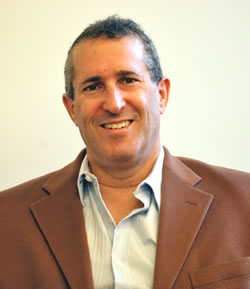Chair's Message

As Chair, I have the honor of offering you an enthusiastic welcome to the UCLA Department of Physics and Astronomy website. This department, like both the wider university to which it belongs, and the globally-connected city around it, is an incredibly diverse place. Both the faculty and the student body have an international and multi-cultural flair, as well as a strongly independent and innovative approach to the exploration of an impressive variety of fundamental and applied research topics.
The areas embraced by UCLA physics research span the range from the well-established disciplines of "big science", e.g. the search for the Higgs boson at the LHC, and frontier plasma science underpinning fusion energy, to newly emerging fields such as the physics of hearing and neuroscience. In astronomy, UCLA faculty are pioneers in the areas of extra-solar system planets, galactic astronomy, and cosmology. This effort is uniquely enabled by the world-renowned capabilities in design and construction of infrared instrumentation by our Infrared Laboratory.

The creation of cutting edge instruments that open the door to scientific discovery is a common theme here. UCLA faculty were central to the development of the X-ray free-electron laser, and are now among the first users of this revolutionary imaging tool.
First rate experiments are always complemented by theory, and the department has an impressive effort that encompasses condensed matter physics, elementary particles, biophyiscs, and plasma physics. In the complex context of modern research problems, the reach of theory is necessarily extended by the use of extreme computing power. UCLA Physics and Astronomy is a historic leader in high-end scientific computing.
The list of research topics addressed within the department is long and compelling. Beyond the areas already, mentioned, it includes experimental hard and soft condensed matter, atomic-molecular-optical physics, collider based nuclear physics, astroparticles, plasma accelerators and biophysics. There is great synergy between the diverse areas, as for example the methods of particle physics detectors are applied to biological imaging. This cooperation extends beyond the department on the UCLA campus, with collaborations between our faculty and chemists, biologists and engineers encouraged by the UCLA California Nanosystems Institute. There are burgeoning joint investigations between department members and their counterparts in the world-class medical school at UCLA. More detailed information is to be found on this site as well as individual faculty and research group websites.
The faculty leading this enterprise includes members of the National Academy of Sciences, as well as the American Academy of Arts and Sciences. They have received prestigious prizes like the National Medal of Science, the ICTP Dirac Prize, the Newton Lacy Pierce Prize in Astronomy, the UCLA Women of Science Award, the National Academy of Sciences Arctowski Medal, the UAP Grand Prix Scientifique, the Thomas Alva Edison Science Award, the Russell Prize, the International Free-Electron Laser Prize and the Wilson Prize.
The physics and astronomy research program at UCLA takes place in the context of a strong and successful teaching mission that is implemented in both the classroom and the laboratory. Talented and highly motivated undergraduate and graduate students are the focus of this effort, and provide much of the curiosity and persistence demanded by cutting edge research. After one adds the dedicated academic and research staff to the students and faculty, a picture emerges of a remarkably collegial and tight-knit community.
This brief welcome message offers a short guide to the academic community that is our department. Whether you are interested in the UCLA Department of Physics and Astronomy as a potential colleague, student, or benefactor, or are simply curious about our educational and research activities, I invite you to explore this website in more detail.
